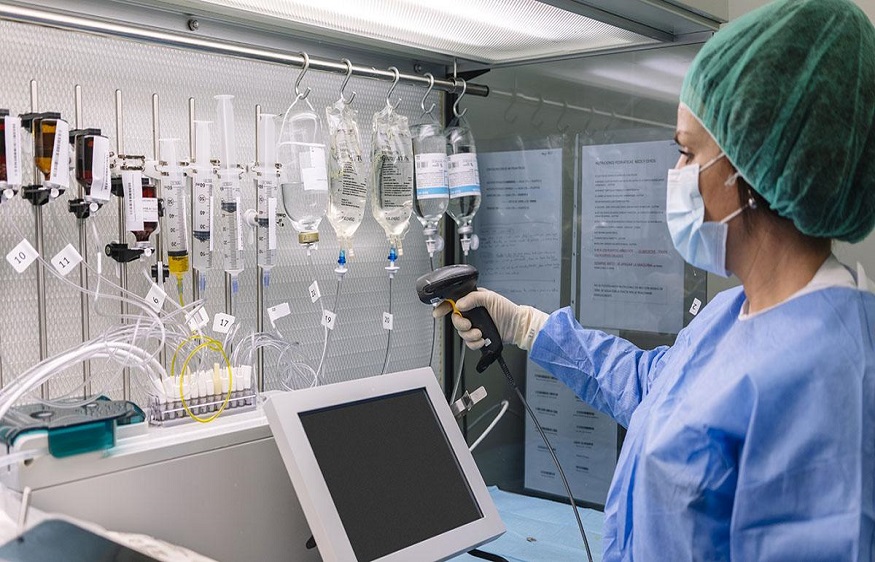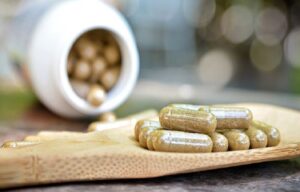
What Types of Dental Anaesthesia Are There in Clinical Treatments?
There are many types of dental anaesthesia on the market. Choosing the type of anaesthesia to use well favours the performance of dental treatments both for the professional and for the patient himself since it helps to avoid the sensation of discomfort or pain that may arise during the intervention.
Types of dental anaesthesia
Before carrying out any oral treatment, it is essential to be informed about the different types of dental anaesthesia and their forms of administration since the dentist must know the necessary details to answer the questions and concerns of each person and to administer the quantity and the ideal type of dental anaesthesia in each case.
To do this, a detailed clinical history of the patient must be created, and their situation is known in a way that allows us to cover their needs and administer the appropriate amount of anaesthesia.
From DVD Dental, we want to help you to know what the main objective of dental anaesthesia is, what types of applications exist and in which cases special attention should be paid to its administration. Each type of oral anaesthesia, whether more innovative or classic, has a series of advantages that we explain below.
Dental anaesthesia for each treatment
Local anaesthesia
Local anaesthesia interrupts transmission at a specific point of the nerve path. Its objective is to reversibly inhibit nerve conduction in some regions of the oral cavity.
Undoubtedly, it is one of the most used oral anaesthesia in dental treatments, such as implants, aesthetic veneers and even extractions. Thanks to its versatility, it eliminates the discomfort and sensitivity of the oral cavity in numerous situations.
Anaesthetic creams and gels
Generally, these anaesthetic creams and sprays are used to numb a particular area of the patient’s oral cavity.
The administration of this anaesthesia is topical use, so its effectiveness is more limited than in other types of oral anaesthesia.
This main objective is to relax the patient, reassure him and make his experience at the dentist as bearable as possible.
Over time, this technique is gaining importance in many dental clinics, especially in patients such as children.
Likewise, this method is standard in surgeries for the placement of dental implants to avoid to a greater extent that patients may feel fear.
light sedation
It consists of the application of nitrous oxide through a mask using inhalation. It helps treat periodontal issues such as gum maintenance.
General anaesthesia
This dental anaesthesia is not usually used too often, as it carries certain risks. It is administered during oral interventions where certain deformities and maxillofacial alterations are corrected.
Likewise, it can be applied in more complicated oral treatments, such as the placement of dental implants or the extraction of the third molar. This type of anaesthesia avoids using other types of anaesthetics since it takes the patient to a complete state of unconsciousness.
Depending on the application
First, there are two types of dental anaesthesia depending on how it is administered. Infiltrative anaesthesia is the one that is applied through a needle in some area of the oral cavity, so its administration is more painful.
On the other hand, topical anaesthesia is applied using a more comfortable and less annoying gel or spray, although it also implies that the duration of the effect is shorter.
According to the procedure
In addition to considering the different types of dental anaesthesia, one must consider which anaesthesia to choose for each procedure since it can be truncal or periapical.
The triangular is administered in a specific quadrant of the oral cavity, while the periapical is directed to a particular tooth.
oral sedation
Before treatment, either the night before or an hour before starting the procedure, oral sedatives may be administered. However, this option is not very common in dental practice.
Needle-free anaesthesia
Through pressure injectors, the liquid passes at high speed through the injector holes. It is deposited in the subcutaneous tissue of the oral cavity, passing through the epidermis and the buccal mucosa. In this way, the entry of anaesthesia is practically painless.
Special cases
In the case of children or pregnant women, it is essential to pay attention to the types of anaesthesia administered to perform the dental treatment.
In both cases, it is necessary to carry out a detailed record that includes matters such as possible allergies, if there are respiratory or cardiac problems, and recent illnesses, among others.
The dentist will assess each case and patient, in particular, to determine what type of dental anaesthesia is the most recommended for the procedure.
Material for anaesthesia
Types of syringes for dental anaesthesia
There are different types of syringes for dental anaesthesia on the market, and they are classified into two large groups: reusable and disposable. Below we explain the characteristics of each of the types.
Reusable dental syringes
Metal syringes are most used when anaesthetizing a patient to start treatment. This device, apart from being reusable, must be autoclavable and versatile. Accept any cartridge and needle in the corresponding slots. Reusable dental syringes are classified into aspirating and non-aspirating.
Suction syringes are the most recommended in dental practice. The main advantage of these syringes is that aspiration is done with one hand and involves less effort and better handling.
This type of syringe is used to aspirate any cloud of blood in a vein, leaving it sterile, to later insert the anaesthetic through the needle. These syringes can be intraligamentary or high-pressure jet injectors, or jet injections.
High-pressure syringes have a trigger system that connects with a screw used to calculate the intensity of the puncture. Being able to accept various pressure points so that the needle is not at risk of breaking and causing discomfort to the patient, it is used with a concise hand.
Contrary to the previous one, the jet injector system is used without a needle and is, therefore, the most suitable for children. With this method, only local anaesthesia is achieved. Consequently, it is similar to the topical anaesthesia example.
Disposable dental syringes
The material from which this type of syringe is made is mainly plastic. There are different sizes of syringes and needles. The main drawback is that vacuuming must be done with both hands, and they do not adapt to all cartridges on the market.
These types of needles are not recommended for daily dental practice, but they are also indicated for people allergic to latex.
As they are disposable, it is indicated that they are used for one patient and subsequently recycled in the appropriate bin. Likewise, the plastic is suitable for autoclaving.
Types of needles for dental anaesthesia
The paper is responsible for channelling anaesthesia to the tissue. Anaesthesia needles are made of stainless steel, and their size is between 32 mm and 10 mm. Depending on the treatment used, one extent or another is used.
The needle is screwed onto the syringe and comprises four parts: the angle, the shaft, the connector and the syringe adapter. Each of these elements has different characteristics:
The bezel has three sizes, which are identified by colours: long, identified with yellow; medium, orange colour; short blue and extra short purple.
The needles are for single use; that is, they are used on a single patient, and when finished, it is essential to deposit them in medical waste containers for proper destruction.
Other ways to apply dental anaesthesia
Some systems have been developed that help administer anaesthesia differently and innovatively. One is The Wand STA System, a computerized anaesthesia delivery system that automatically controls and regulates flow and pressure during injection.
The Wand helps reduce fear of the dentist and minimizes pain 100% so that the patient is calmer and it is easier to perform the treatment.


